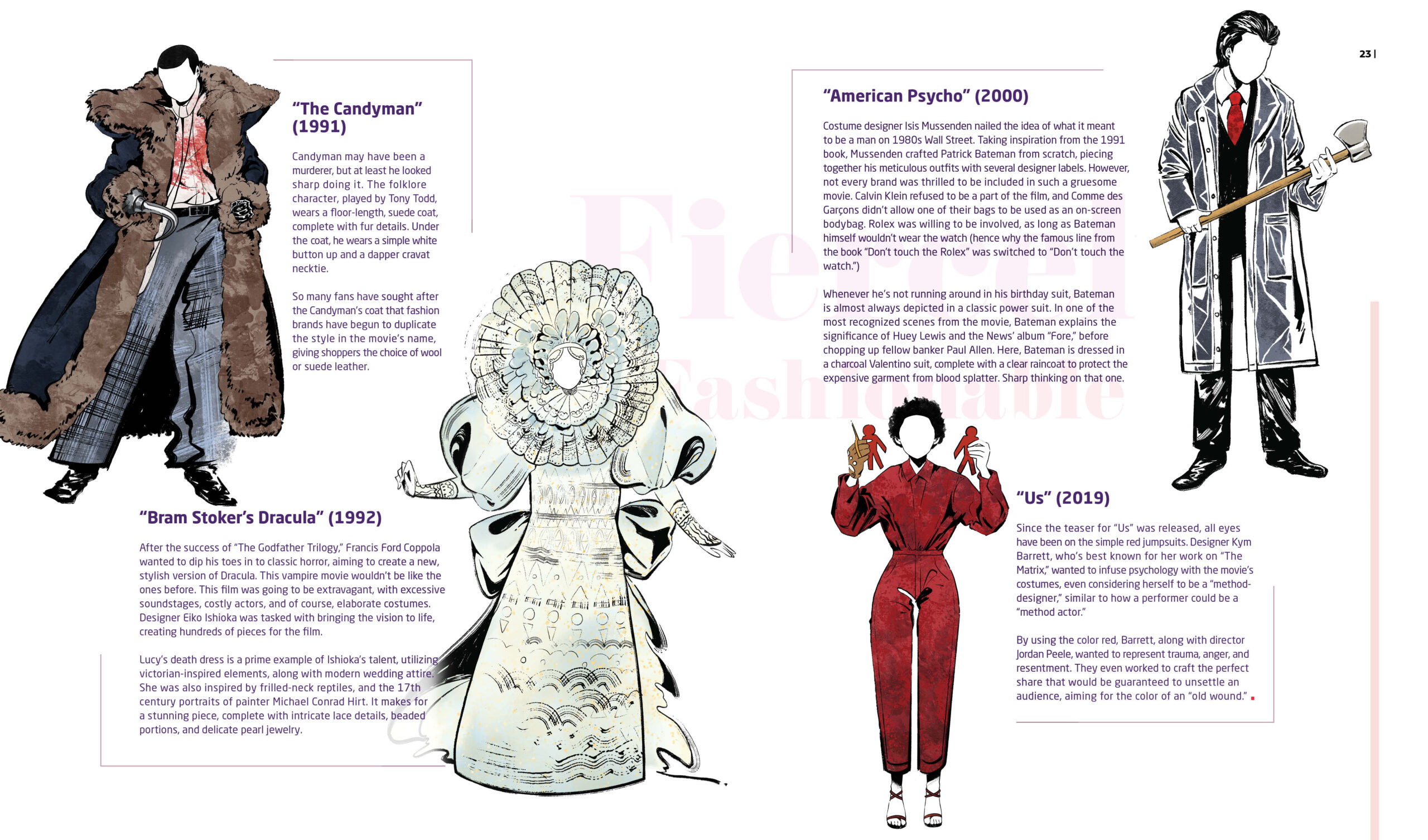By: Eva Erhardt
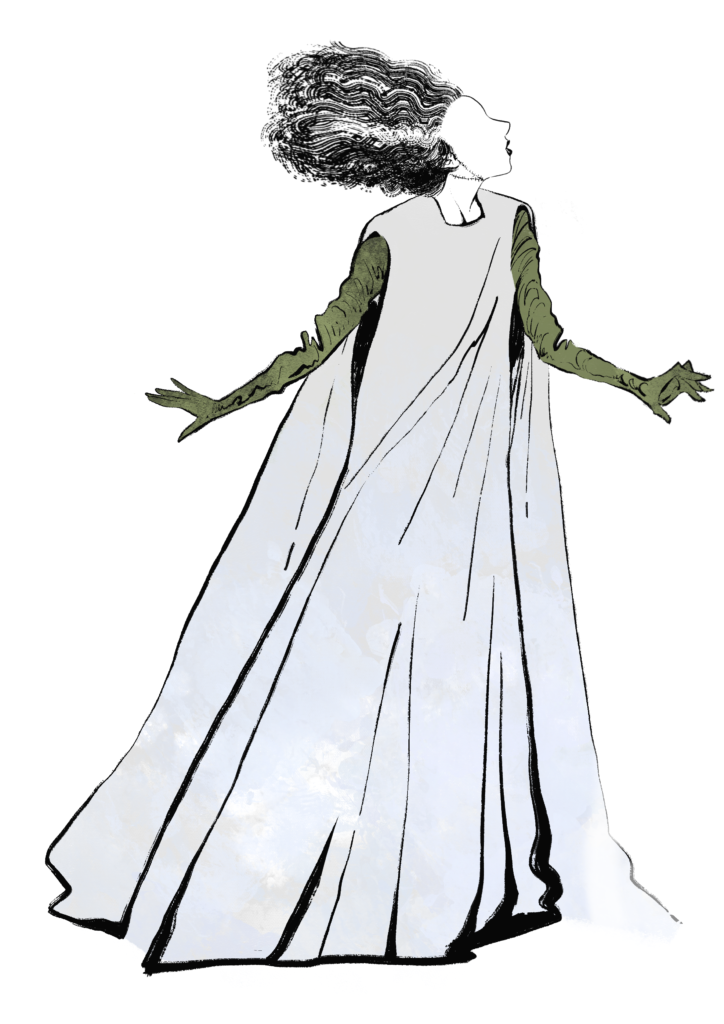
- The Bride of Frankenstein (1935):
Although “The Bride of Frankenstein” is a sequel to its 1931 predecessor, its fashion statements have solidified itself into popular culture. This monstrous look was made in conjunction with makeup artist Jack Pierce, and uncredited costume designer Vera West, who was best known for her slinky silk gowns. Perhaps the most iconic facet is The Bride’s conical wig, embellished with bright white streaks. Although we know the hair-do to be raven in color, the wig was actually red, but appeared in greyscale in the classic movie.
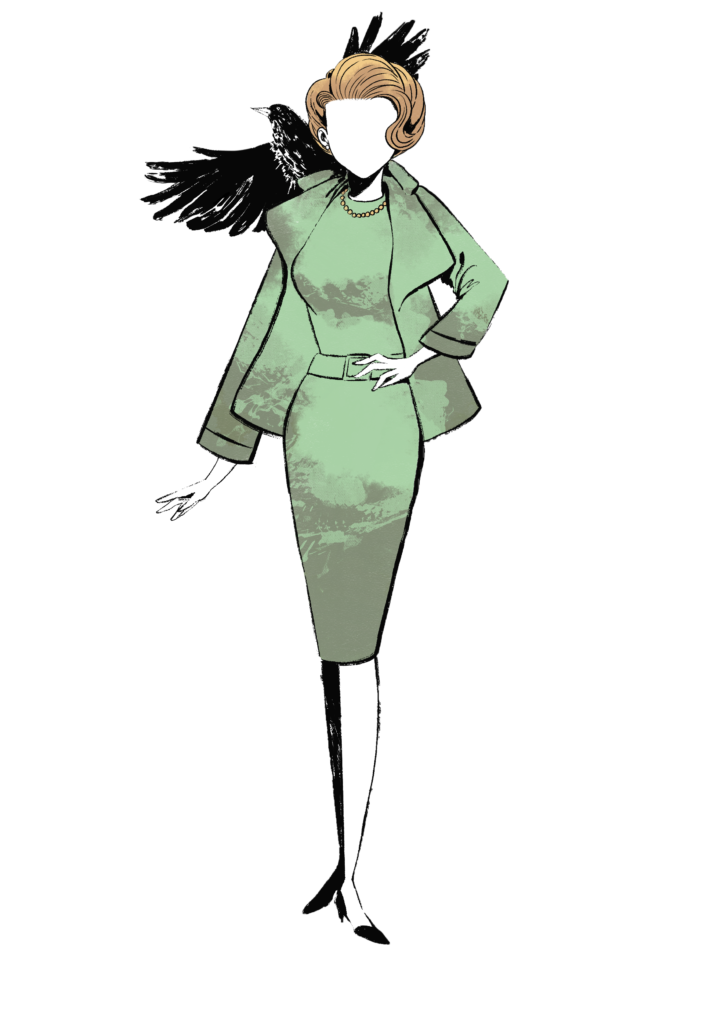
- “The Birds” (1963)
Tippi Hedren’s green suit is one of the most recognized costumes in movie history. Even the color alone is enough to conjure up nightmares of Hitchcock’s classic film. It was designed by Edith Head, who was inspired by popular post-war, mid-century styles and Hitchcock’s previous film, “Rear Window.” In a film that is comprised of the mostly grey and beige environment of Bodega Bay, Hedren stood out, appearing classy and compromised in even the most horrific moments.
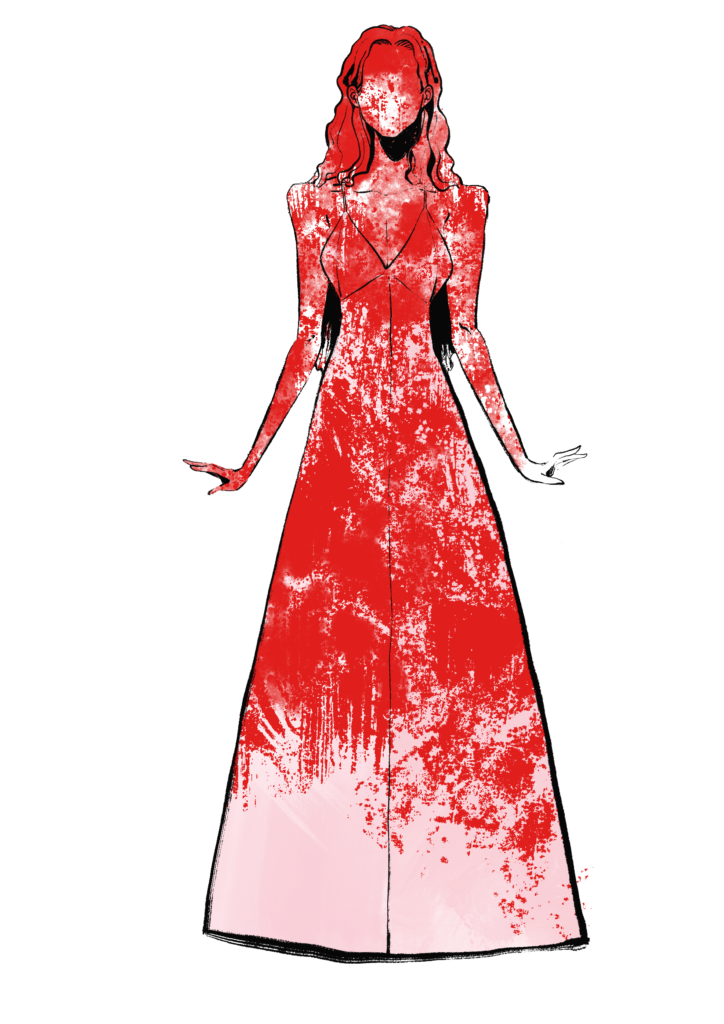
- “Carrie” (1976)
Blood counts as an accessory in 1976’s “Carrie.” When Sissy Spacek’s titular character is invited to prom, she crafts a pink slip gown in her room, away from her mother’s controlling gaze. When she arrives to the dance, her classmates are stunned at her transformation… but not enough to keep them from dumping gallons of pig’s blood on her head.
The dress now symbolizes a form of female empowerment in sexuality. For years, Carrie was mocked for the childish clothing that her mother dressed her in. But when she makes her own prom dress, she is able to break free from her stifling mother and the torment of her classmates. Only when she’s covered in blood that she realizes her power.

- “Beetlejuice” (1988)
Although the “bio-exorcist” goes through many costume changes, Beetlejuice’s most famous outfit is his moth-eaten and pin-striped suit. Paired with a pair of black combat boots and a stringy green wig, this is one of the replicated costumes in the Halloween season. Costume designer Aggie Guerard Rodgers had a hard time convincing director Tim Burton to go “all out” on the costumes, but proved it to him after styling the characters of Lydia and her mother, Delia.
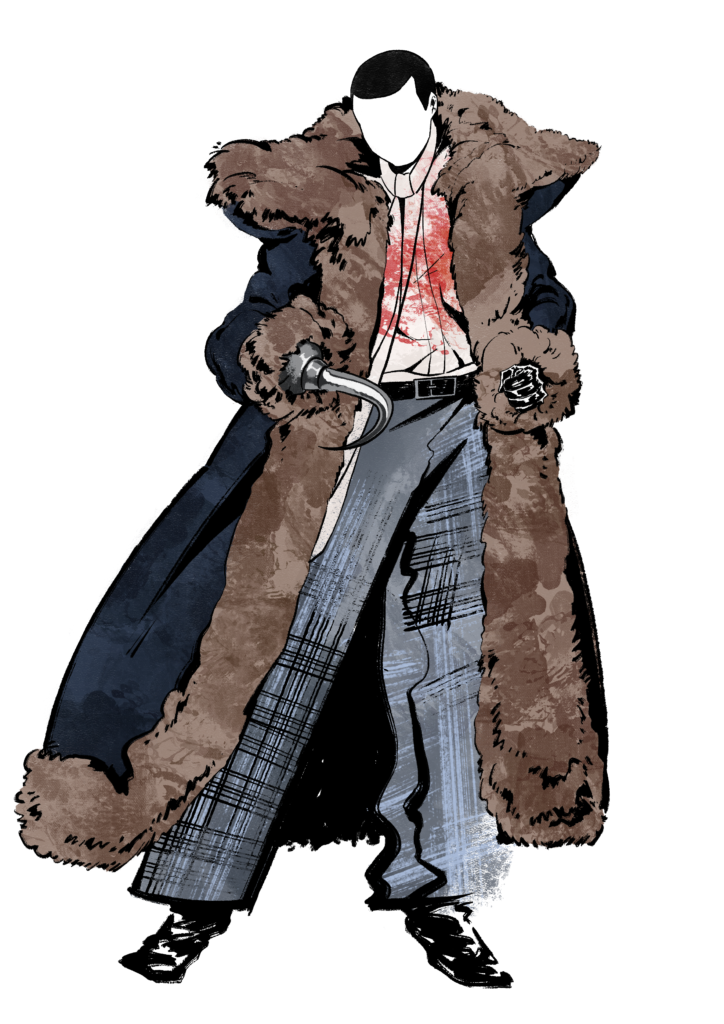
- “The Candyman” (1991)
Candyman may have been a murderer, but at least he looked sharp doing it. The folklore character, played by Tony Todd, wears a floor-length, suede coat, complete with fur details. Under the coat, he wears a simple white button up and a dapper cravat necktie.
So many fans have sought after the Candyman’s coat that fashion brands have begun to duplicate the style in the movie’s name, giving shoppers the choice of wool or suede leather.
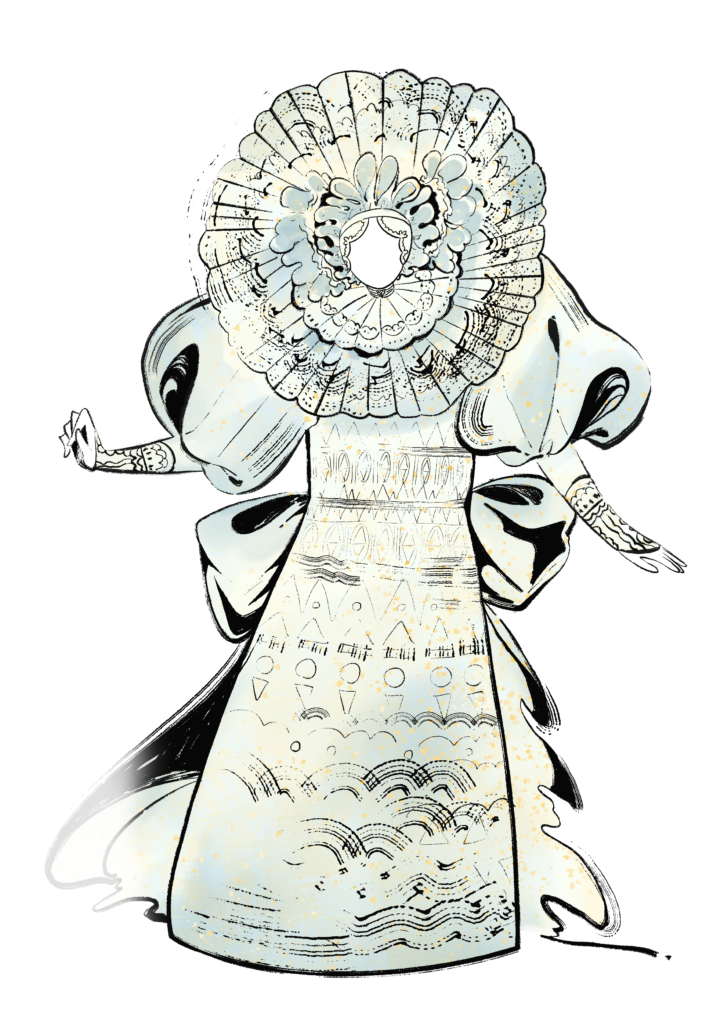
- “Bram Stoker’s Dracula” (1992)
After the success of “The Godfather Trilogy,” Francis Ford Coppola wanted to dip his toes in to classic horror, aiming to create a new, stylish version of Dracula. This vampire movie wouldn’t be like the ones before. This film was going to be extravagant, with excessive soundstages, costly actors, and of course, elaborate costumes. Designer Eiko Ishioka was tasked with bringing the vision to life, creating hundreds of pieces for the film.
Lucy’s death dress is a prime example of Ishioka’s talent, utilizing victorian-inspired elements, along with modern wedding attire. She was also inspired by frilled-neck reptiles, and the 17th century portraits of painter Michael Conrad Hirt. It makes for a stunning piece, complete with intricate lace details, beaded portions, and delicate pearl jewelry.
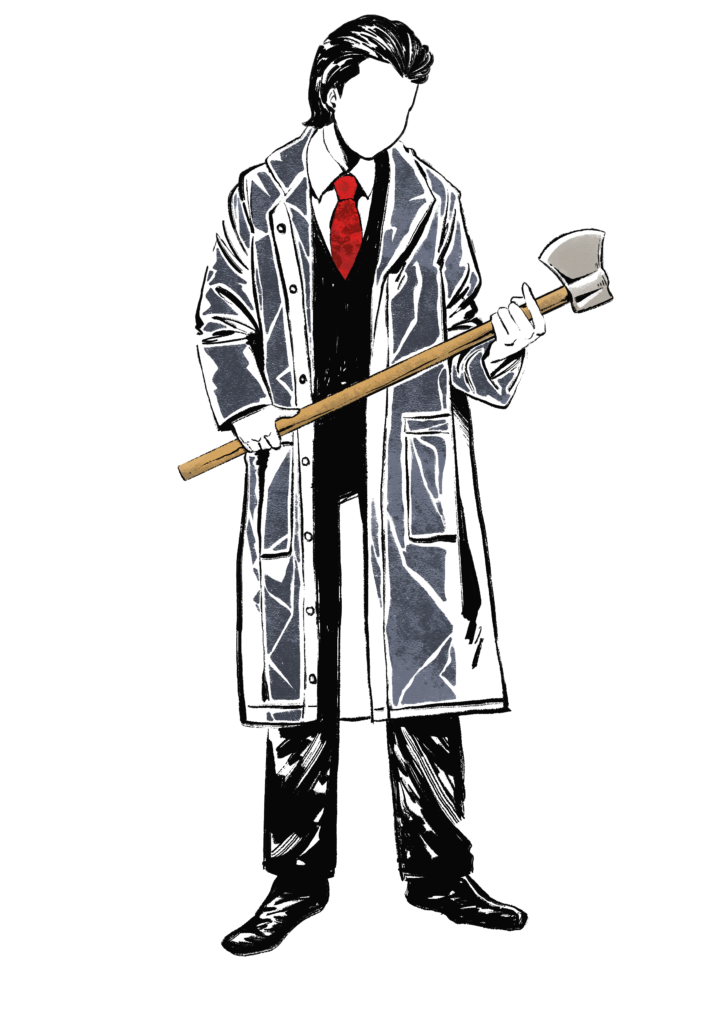
- “American Psycho” (2000)
Costume designer Isis Mussenden nailed the idea of what it meant to be a man on 1980s Wall Street. Taking inspiration from the 1991 book, Mussenden crafted Patrick Bateman from scratch, piecing together his meticulous outfits with several designer labels. However, not every brand was thrilled to be included in such a gruesome movie. Calvin Klein refused to be a part of the film, and Comme des Garçons didn’t allow one of their bags to be used as an on-screen bodybag. Rolex was willing to be involved, as long as Bateman himself wouldn’t wear the watch (hence why the famous line “Don’t touch the Rolex” was switched to “Don’t touch the watch.”)
Whenever he’s not running around in his birthday suit, Bateman is almost always depicted in a classic power suit. In one of the most recognized scenes from the movie, Bateman explains the significance of Huey Lewis and the News’ album “Fore,” before chopping up fellow banker Paul Allen. Here, Bateman is dressed in a charcoal Valentino suit, complete with a clear raincoat to protect the expensive garment from blood splatter. Good thinking on that one.
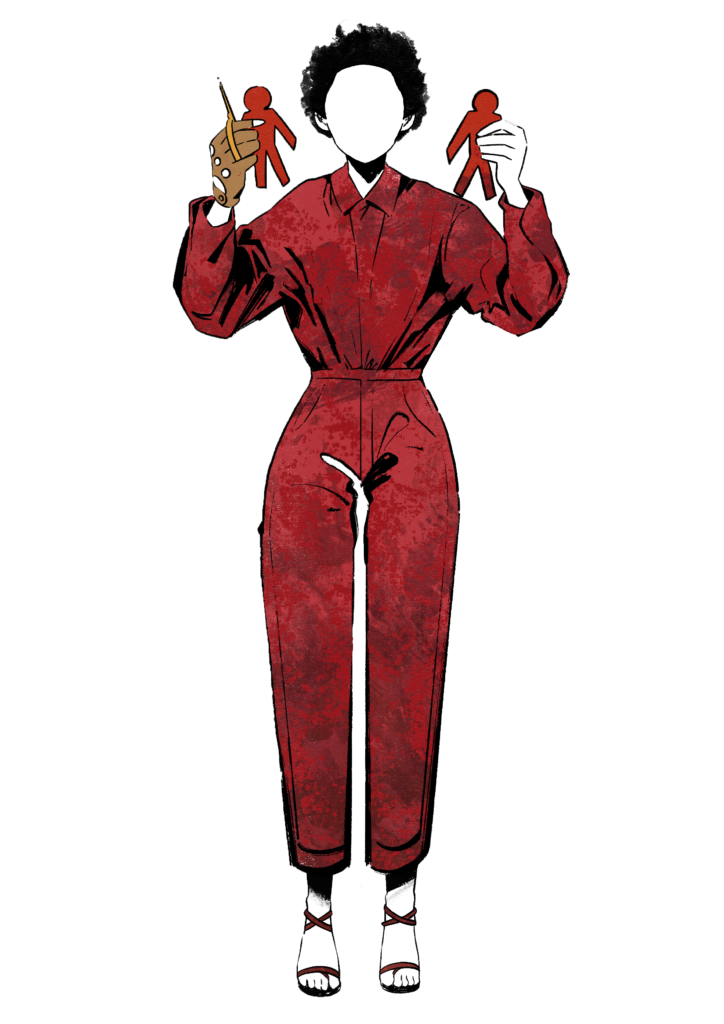
- “Us” (2019)
Since the teaser for “Us” was released, all eyes have been on the simple red jumpsuits. Designer Kym Barrett, who’s best known for her work on “The Matrix,” wanted to infuse psychology with the movie’s costumes, even considering herself to be a “method-designer,” similar to how a performer could be a “method actor.”
By using the color red, Barrett, along with director Jordan Peele, wanted to represent trauma, anger, and resentment. They even worked to craft the perfect share that would be guaranteed to unsettle an audience, aiming for the color of an “old wound.”
